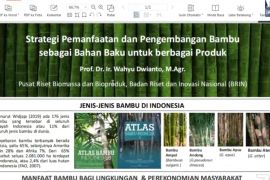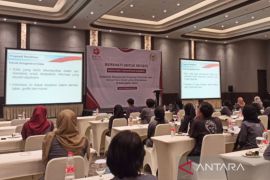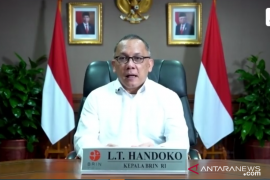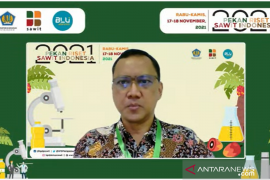During an online discussion from Jakarta, Wednesday, Handitya stated that the relation between forest protection and local wisdom can be found in the portrait of the ecological behavior of indigenous people, who have lived for centuries around the forest.
"Local communities have their own way of taking better care of the land and natural resources because they have a kind of religious attachment to the forest," he remarked.
Ancestral values and ethics included in local wisdom encompass how humans should treat nature and relate to nature that has existed for a long time.
"Local communities are expected to be the main maintenance agents in terms of biodiversity and forest conservation," he noted.
On the same occasion, Subarudi from the BRIN Population Research Center stated that a lot of local wisdom is taken into consideration in forest management, for instance, local wisdom regarding durian in Kalimantan.
He explained that community participation in forest governance has also been encouraged by the government through the Ministry of Environment and Forestry (KLHK) through social forestry schemes.
Social forestry is divided into five types: village forests, community forests, community plantation forests, customary forests, and forest partnerships.
He remarked that recognition of customary forests in social forestry could still run more optimally, with data from KLHK in the 2016-2023 period that 244,195 hectares of customary forests were recognized to be spread across 18 provinces and 40 cities and districts.
The area is beyond the recognition of customary areas by the regional government.
According to the non-governmental organization, the Customary Area Registration Agency (BRWA), the potential area of customary forests is 1.3 million hectares for Sumatra Island, 8.4 million hectares in Kalimantan, 1.2 million hectares in Sulawesi, and 271 thousand hectares in Java, Bali, and Nusa Tenggara.
Meanwhile, in Maluku, it has the potential to cover 199 thousand hectares and 11.3 million hectares in Papua.
"Regulations are expensive if one by one (determines) customary forests. I have previously suggested that just check how many customary forests there are in one regional regulation," he stated.
Related news: Deforestation down, sustainable forest utilization up: KLHK
Related news: Sustainable forest management yields positive results in 2023: govt
Related news: Govt strengthening forest management units to boost economy
Translator: Prisca Triferna Violleta, Cindy Frishanti Octavia
Editor: Azis Kurmala
Copyright © ANTARA 2024












